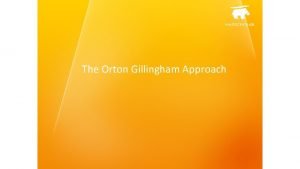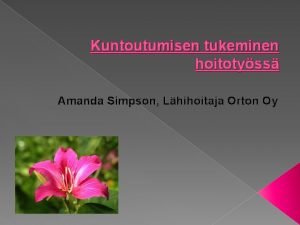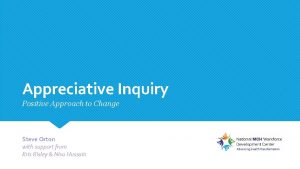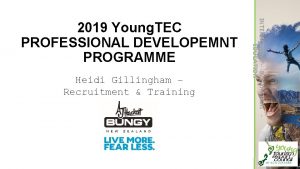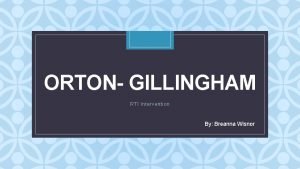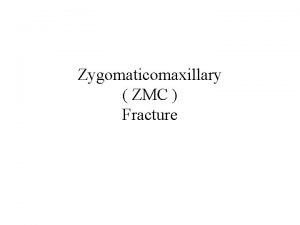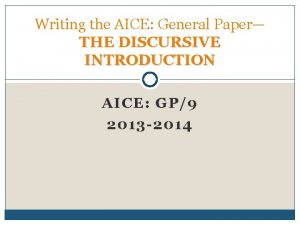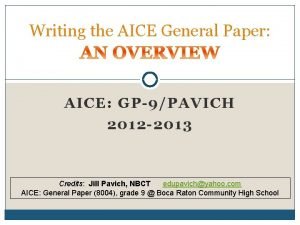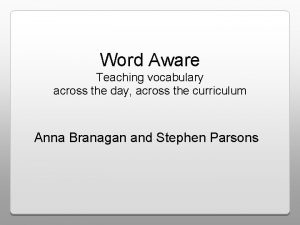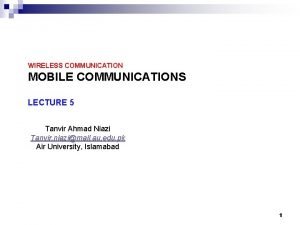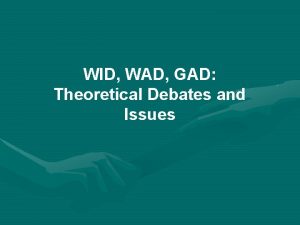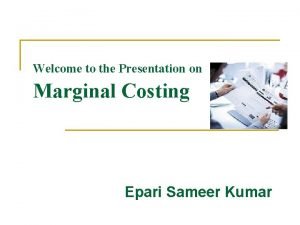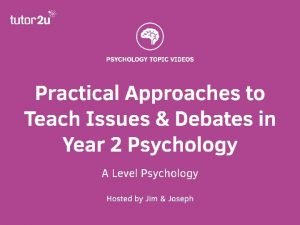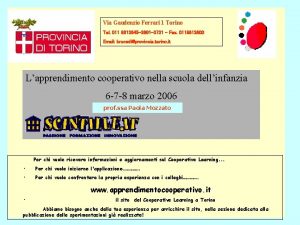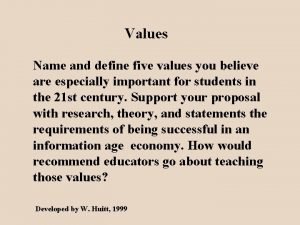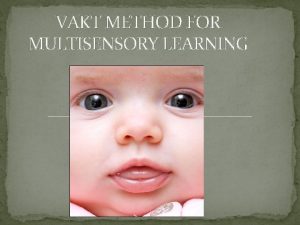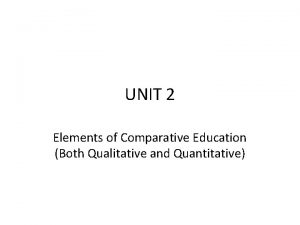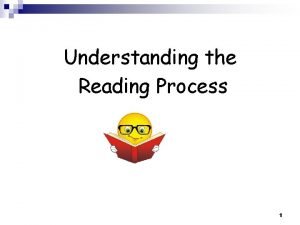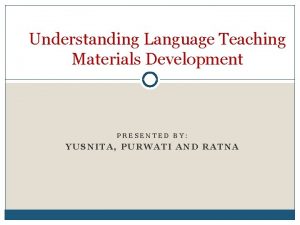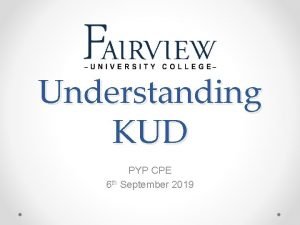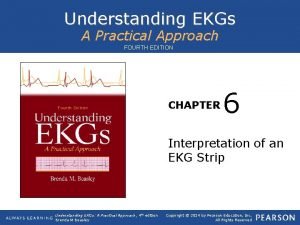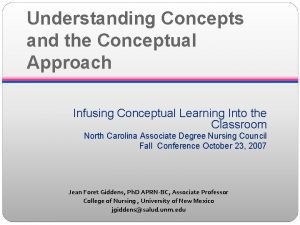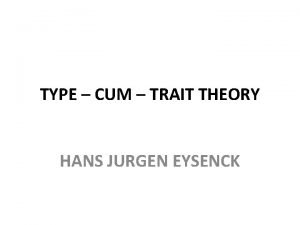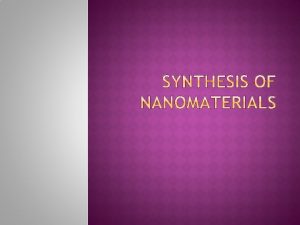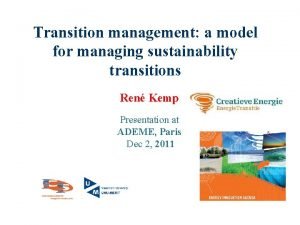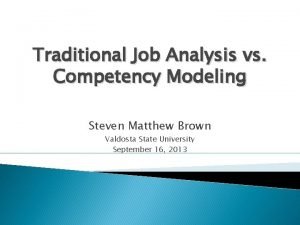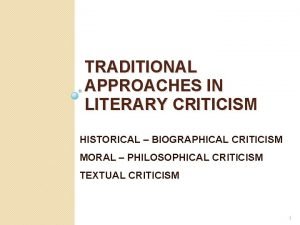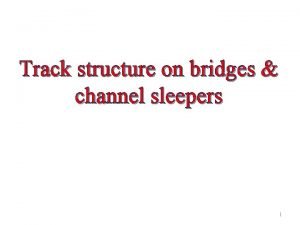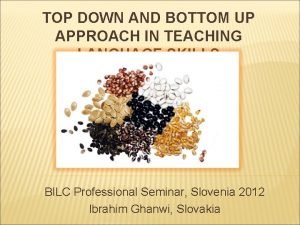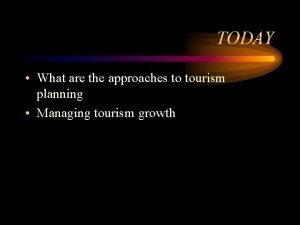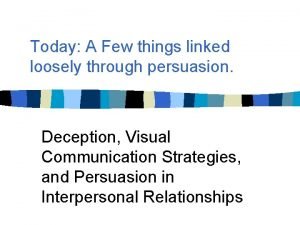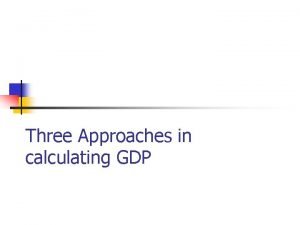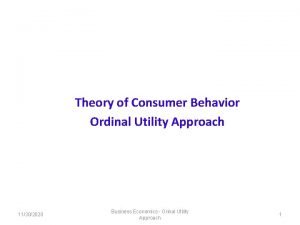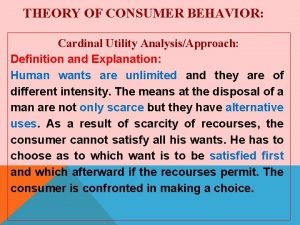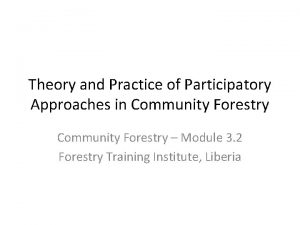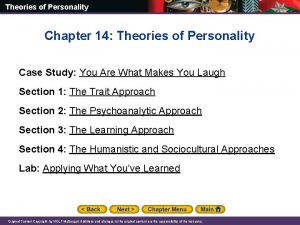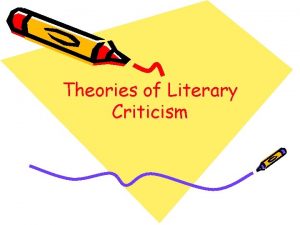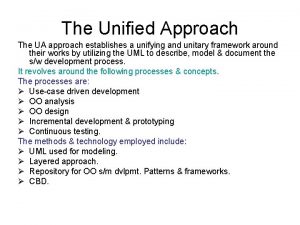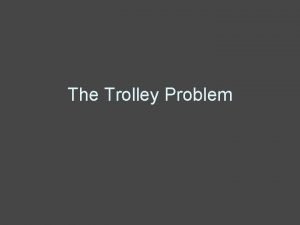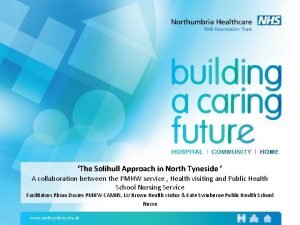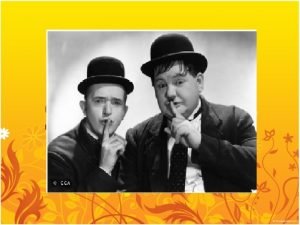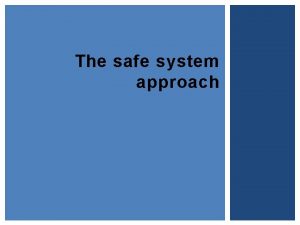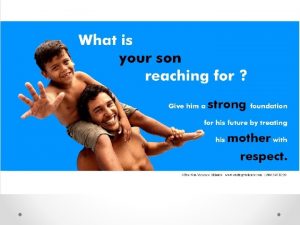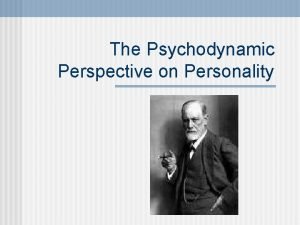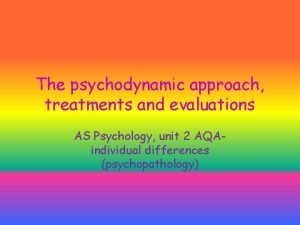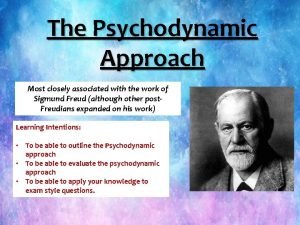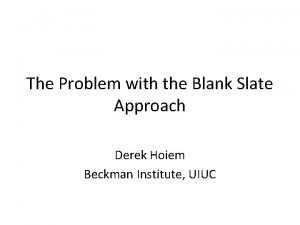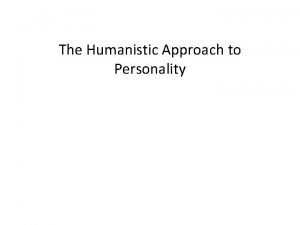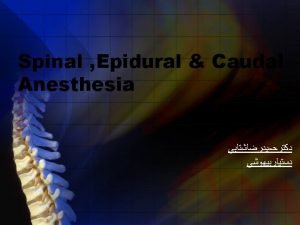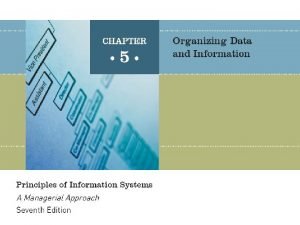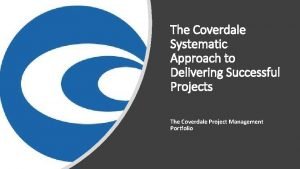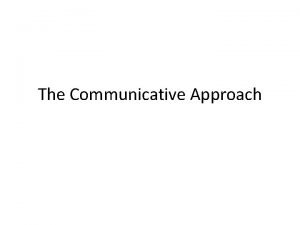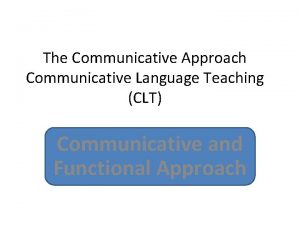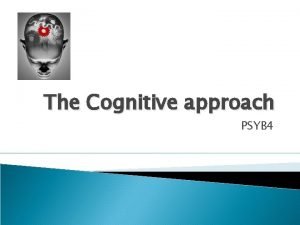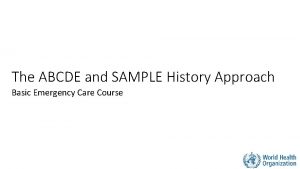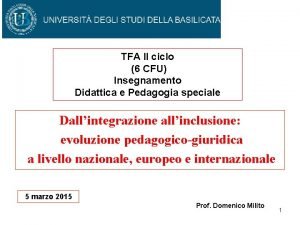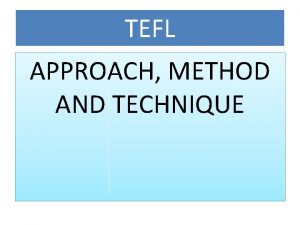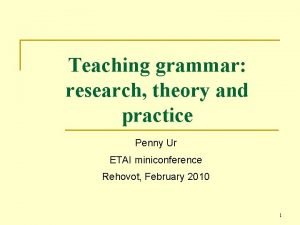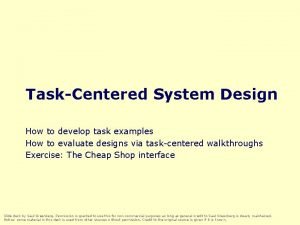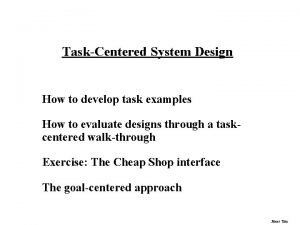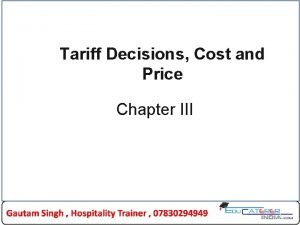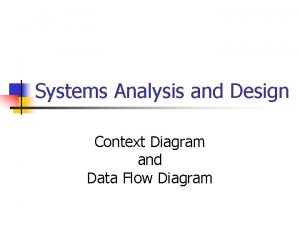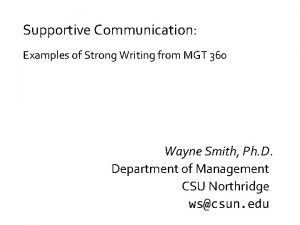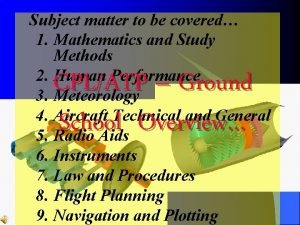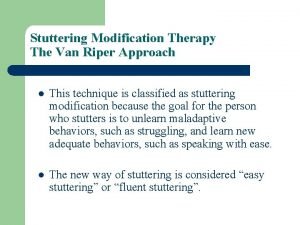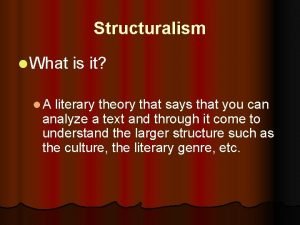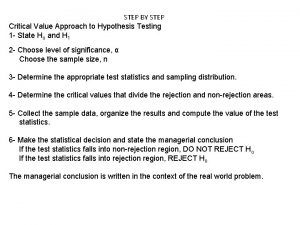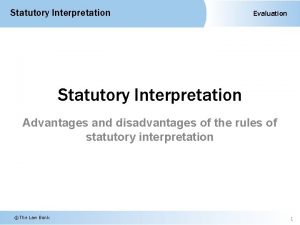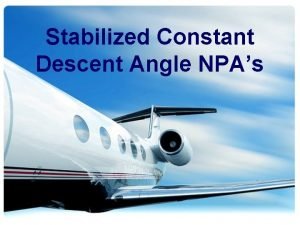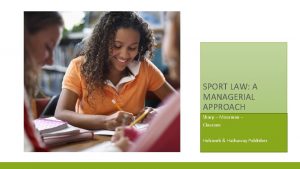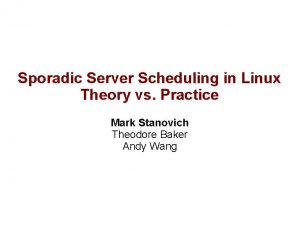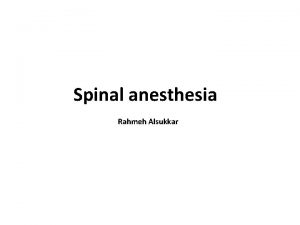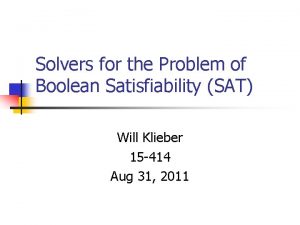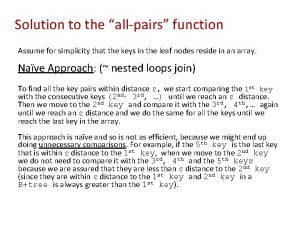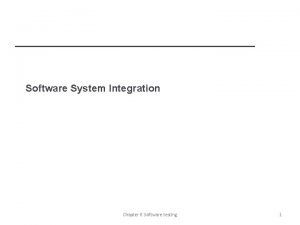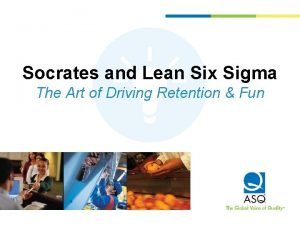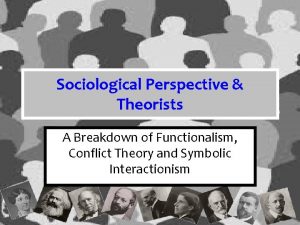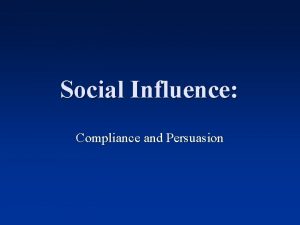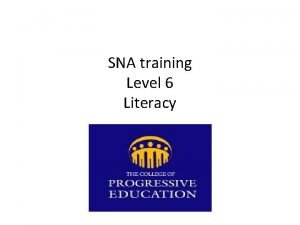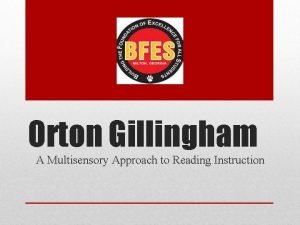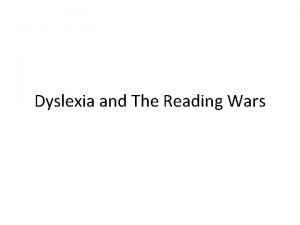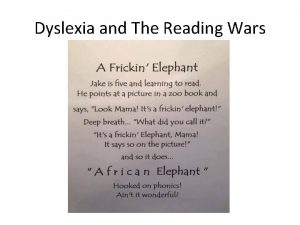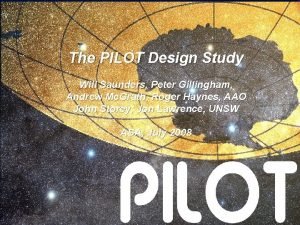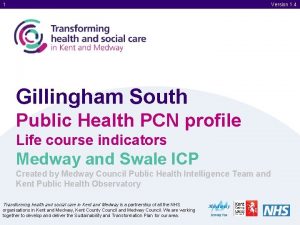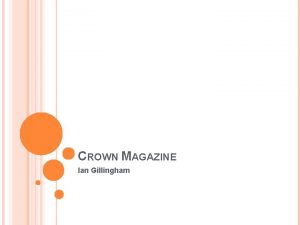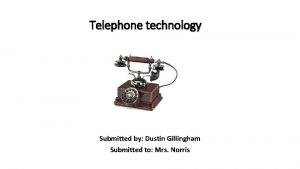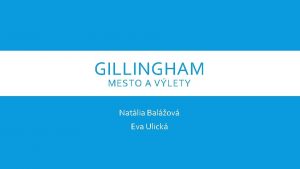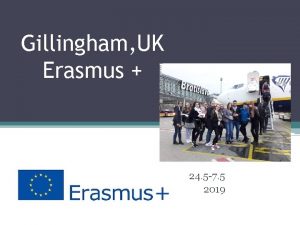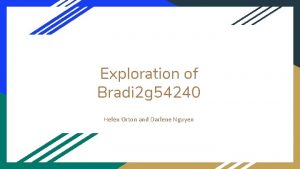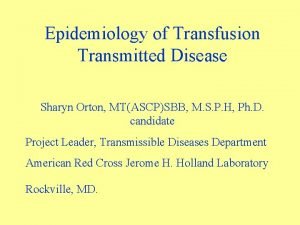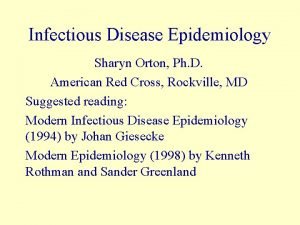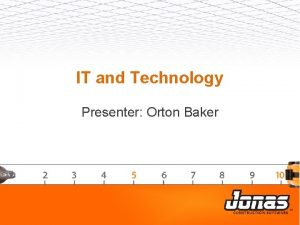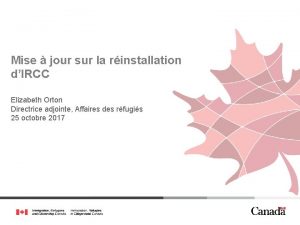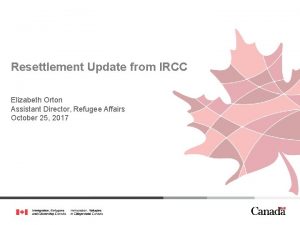The Orton Gillingham Approach Review What is the




















































































































































- Slides: 148

The Orton Gillingham Approach

Review: What is the Orton Gillingham Approach? Language-based: The Orton Gillingham approach is based on a technique of studying and teaching language, understanding the nature of human language, the mechanisms involved in learning, and the language-learning processes in individuals.

What is the Orton Gillingham Approach? Multisensory: Orton-Gillingham teaching sessions are action-oriented and involve constant interaction between the teacher and the student and the simultaneous use of multiple sensory input channels reinforcing each other for optimal learning. Using auditory, visual, and tactile/kinesthetic elements, all language skills taught are reinforced by having the student listen, speak, read and write. For example, a dyslexic learner is taught to see the letter a, say its name and sound and write it in the air – all at the same time. A textural feature, such as tracing in sand, may be used to add a tactile stimulus. The approach requires intense instruction with ample practice. The use of multiple input channels is thought to enhance memory storage and retrieval by providing multiple "triggers" for memory.

What is the Orton Gillingham Approach? Structured, Sequential, and Cumulative: The Orton-Gillingham teacher introduces the elements of the language systematically. Sound-symbol associations along with linguistic rules and generalizations are introduced in a linguistically logical, understandable order. Students begin by reading and writing sounds in isolation. Then they blend the sounds into syllables and words. Students learn the elements of language—consonants, vowels, digraphs, blends, and diphthongs —in an orderly fashion. They then proceed to advanced structural elements such as syllable types, roots, and affixes. As students learn new material, they continue to review old material to the level of automaticity. The teacher addresses vocabulary, sentence structure, composition, and reading comprehension in a similar structured, sequential, and cumulative manner.

What is the Orton Gillingham Approach? Cognitive: Students study the many generalizations and rules that govern its structure. They also learn how best they can learn and apply the language knowledge necessary for achieving reading and writing competencies. Hmmm…I need to follow the ll, ff, ss rule

What is the Orton Gillingham Approach? Flexible: Orton Gillingham teaching is diagnostic and prescriptive in nature. Teachers try to ensure the learner is not simply recognizing a pattern and applying it without understanding. When confusion of a previously taught rule is discovered, it is re-taught from the beginning.

Orton-Gillingham and Max. Scholar There are 3 major components to Max. Scholar 1. Max. Phonics 2. Max. Words 3. Max. Reading Let’s take a look at the scope and sequence of these components.

Max. Phonics

Scope and Sequence: Consonants and Short Vowels n.

Scope and Sequence: Blends

Scope and Sequence: Digraphs

Workbooks

Max. Words

Scope and Sequence: Syllables Closed Consonant-le Open Vowel Teams Consonant-e r-controlled

Scope and Sequence: Spelling Rules

Scope and Sequence: Prefixes and Suffixes

Scope and Sequence: Greek and Latin Roots

Workbooks (Max. Words) Lessons are identical to software!

Max. Reading

Max. Reading Level 0 (K) Prep 1 & Prep 2 Max. Reading Level 0 (K)Prep 1 & Prep 2 These two books are different than the rest because they only include images instead of text. We use STRUCTURE WORDS to prompt students in order to help the student create a movie in their head and retell the story. T ü Ask questions like: what is going on in the picture? Can you picture any sound? Where do you think this is happening? ü Not all words will be applicable to every picture. Use only those that are relevant so that students can create the movie in their heads. ü After structure exercise is done, the student will move on to the comprehension test.

Max. Reading Levels 0 & 1 On the remaining books of level 0, as well as all the books in level 1, we will start reading text, and adding a few more exercises for each chapter: T 1. Reading: the story is read by the student (independently), by the teacher (guided reading), or by the computer (read aloud button). 2. Highlighting: the student is asked to highlight the topic, main idea, and important details of the story. 3. Self-check: the student receives a score on the highlighting. He/she can then compare what the system considered as the correct highlighting. 4. Comprehension: the student answers five reading comprehension questions. 5. Score: the student receives a chapter score (highlighting + comprehension).

Max. Reading Levels 2 and up Starting from level 2, and up to level 12, there are even more activities for the student to complete. We start incorporating studying and writing strategies here as well: 1. 2. 3. 4. 5. 6. 7. 8. 9. T Max. Vocab: the student goes through the selected vocabulary words and their definitions. Reading: the story is read by the student (independently), by the teacher (guided reading), or by the computer (read aloud button). Highlighting: the student is asked to highlight the topic, main idea, and important details of the story. Self-check: the student receives a score on the highlighting. He/she can then compare what the system considered as the correct highlighting. Vocabulary: the student encounters and defines new vocabulary before reading the article Outline: the student organizes the information from the text into ideas and supporting details. Written exercise: the student can choose to write a summary, answer an open-ended question, or a general question. Comprehension: the student answers five reading comprehension questions. Score & games: the student receives a chapter score (highlighting + comprehension).

Learning to Teach Orton-Gillingham Based Lessons






Keep Calm and Welcome December

Max. Phonics


December’s Homework: Creating a Lesson Plan sh, th, wh, ch, ph, qu

LESSON: Max. Phonics: sh, th, wh, ch, ph, qu 1. Visual/Kinesthetic Drill—sound cards Show blend cards with blend name, keyword and sound (cl-clam-/cl/) for all blends sh, th, wh, ch, ph, qu. Students respond to showing card by repeating pattern and then skywriting while speaking motor pattern aloud when cards are shown. Repeat as necessary for practice. Review motor patterns if any student falters in skywriting/writing.

2. Tactile Auditory/Sound Drill Say blend name, keyword and sound out loud for all blends sh, th, wh, ch, ph, qu. Students respond by repeating pattern and individually skywriting/writing blends without visual stimulus. After each, reinforce by showing visual stimulus.

3. Sound Blending/Tapping Use sand, salt or uncooked rice, Alpha Chips When cued, students create and blend: shed, thin, chat, thin, whiz

4. Fluency/Word List (WPM DRILL, List in workbook, page 34) NAME: SCORE

5. Controlled Reader Workbook p. 38

6. Spelling Dictation then thin photo** shed chat quiz what** when chin quit

7. Sight Words Page 37 in Workbook Show, say, spell, say sight words: try, which, made, also. Students say, spell, say, and write them in notebooks. Cards are visible at all times. Next, follow auditory procedure for sight words: try, which, made, also (say, spell, say, write, flash visual stimulus after spelling).

8. Sentence Dictation Meg quit her job. Mom had a shop. This is a photo of the red quilt. When is the quiz?

Teaching Orton Gillingham Phonics Practice Lesson



What You Need to Teach the O-G Phonics Lesson: • • Lesson Plan (Simply follow the sequence in the Workbook!) Sound Cards Sight Word Cards Phonics Workbook • • Word List for Dictation Fluency Word List Sentences for Dictation Controlled Reader • Manipulatives: Alpha Chips or sounds written on index cards. Tray or plate with sand, salt or sugar for tracing motor patterns of phonograms. • Students need paper and pencil for dictation.


Sound Cards visual and auditory teaching and review All of the sound card pictures are found in the Dashboard in the software. Use these to make cards for other lessons. cl, bl, pl, fl, gl, sl, a

Workbooks

Manipulatives Use Alpha Chips or make manipulatives with index cards and a black sharpie. Also use salt, sand or uncooked rice in trays or plastic plates.

Sight Word Cards Make these with index cards and a red sharpie. with, his, be, may, next, in, will

Phonics Training: How to Make Sounds Stops—Always make the “schwa” as short as possible b c d g j k p qu t w y (Note: here the q and u are paired because the q rarely appears without the u. Together they make the sound “kw”) Continuants—Never insert a “schwa” a e f h i l m n o r s u v x z zh ch th (Note: x sounds like “ks”) Voiced and Unvoiced Cognates VOICED UNVOICED b p d t g k (c) v f j ch z s (may be voiced in some plurals) zh (as in azure, garage) sh th (as in this, brother) th (as in thing, with)

Orton Gillingham Lesson cl, bl, pl, fl, gl, sl, a

Let’s Get Started!

1. Visual Review

Visual Review visual and auditory teaching and review You have these. Also, all of the sound card pictures are found in the Dashboard in the software. cl, bl, pl, fl, gl, sl, a I see them and say them!


cl Around around; down



bl down, up and around; down



pl down, up and around; down



fl half around, down and across; down



gl around, down and half around; down



sl around, turn and around; down



a around, up and down


2. Auditory Review

2. Auditory Review I recognize all of the sounds when I hear them!

cl


bl


pll


fl




sl




3. Manipulatives clap slam flat glad Use Alpha Chips or make manipulatives with index cards and a black sharpie. Also use salt, sand or uncooked rice in trays or plastic plates.

4. Fluency Builds automaticity 60 seconds! The list is found in the workbook, page 38.

Countdown: 60 seconds. Count the number of words correctly read. clap flat blap plap slat slap clap blat slam clag glan blam clad glam plan glat flab plat glad

Fluency norms are in the Dashboard under “Materials”

5. Word Dictation Encoding Success! 1. Pencil and paper (or workbook) dictation of 10 words from the fluency list. cl-a-p These are found in the workbook, pages 36 -37.

5. WORD DICTATION (Choose words from List, page 38) clap slap flat slam slat flab glad blat plan flap

6. Controlled Reader Decoding Success! I’m a GREAT reader!!! The Reader is found in the workbook, beginning on page 42.

Dan is slim and has a big flag. He will bring it to class to play with his pal, Ben. The class will be glad to see a big red flag. It may be hot if it is in the sun. Peg, Sam and Meg like flags. Dan’s dad also likes flags.

7. Sight Words (Visual) Make these with index cards and a red sharpie. with, his, be, may, next, in, will

with

his

be

may

next

in

will

7. Sight Words (Auditory) with, his, be, may, next, in, will

with

with

his

his

be

be

may

may

next

next

in

in

will

will

8. Sentence Dictation Encoding Is Ben with Sam? These are found in the workbook, beginning page 42.

8. SENTENCE DICTATION (taken from Controlled Reader) The class has a big flag. The map is big and flat. Meg will be glad to sit next to Ben. Is Ben with Sam? Dan likes flags.

…and that’s how to teach a complete OG lesson plan! Wow, this looks just like Orton Gillingham!

Wow! Good Practice!

Questions?

Max. Reading

Running the Movie: Start Teaching Reading Comprehension Before Students Even Encounter Text! Preschool students need to begin to visualize and use language to help them to “run a movie in their heads”. Understanding and using basic linguistic concepts is the precursor to understanding what they see and hear and eventually, to understanding what they read as they learn to read.

Here are examples of basic linguistic concepts. This is not an exhaustive list. And, of course, the best way to teach these is, when possible, experience the concept/move their bodies through space, then manipulate objects, and then in the two. D (flat) range. • Basic colors: red, orange, yellow, green, blue, purple, pink, brown, black • Directions - through, around, open, close • Quantities - one, one more, less, more, most, few, many, some • Sequences - first, next, after that, and finally, before, after, • Shapes - circle, triangle, square, rectangle, diamond, oval, round • Size - small, large, big, little, huge, tiny • Social/Emotional States (feelings) - happy, sad, mad, angry, silly, surprised • Textures - bumpy, rough, smooth, soft, prickly, hard • Time - morning, afternoon, evening, late, early, today, tomorrow, week, month, year, day • Spatial Relationships and Positions - on, off, in, out, under, in front, behind, top, bottom, up, down, inside, outside, high, low Descriptions - loud, soft, hot, cold, fast, slow, new, old, empty, full, wet, dry

Max. Reading Level 0 (K) Prep 1 & Prep 2 Max. Reading Level 0 (K)Prep 1 & Prep 2 These two books are different than the rest because they only include images instead of text. We use STRUCTURE WORDS to prompt students in order to help the student create a movie in their head and retell the story. T ü Ask questions like: what is going on in the picture? Can you picture any sound? Where do you think this is happening? ü Not all words will be applicable to every picture. Use only those that are relevant so that students can create the movie in their heads. ü After structure exercise is done, the student will move on to the comprehension test.


Pretend that you cannot see the picture you are displaying for students. Use structure words to encourage students to fully describe the picture. Continue to repeat back to the students their observations so that they can add details or correct errors.


Guided lessons ü It is recommended that the teacher demonstrates the steps of Max. Reading first, and then have the students work independently. ü Different levels contain different exercises which can be done as guided reading by using a smartboard or projector.

Max. Reading Levels 0 & 1 On the remaining books of level 0, as well as all the books in level 1, we will start reading text, and adding a few more exercises for each chapter: T 1. Reading: the story is read by the student (independently), by the teacher (guided reading), or by the computer (read aloud button). 2. Highlighting: the student is asked to highlight the topic, main idea, and important details of the story. 3. Self-check: the student receives a score on the highlighting. He/she can then compare what the system considered as the correct highlighting. 4. Comprehension: the student answers five reading comprehension questions. 5. Score: the student receives a chapter score (highlighting + comprehension).


On an experience chart, make quick line drawings as you tell the story. Then ask students to tell the story in their own words! Bud






Max. Reading Levels 2 and up Starting from level 2, and up to level 12, there are even more activities for the student to complete. We start incorporating studying and writing strategies here as well: 1. 2. 3. 4. 5. 6. 7. 8. 9. T Max. Vocab: the student goes through the selected vocabulary words and their definitions. Reading: the story is read by the student (independently), by the teacher (guided reading), or by the computer (read aloud button). Highlighting: the student is asked to highlight the topic, main idea, and important details of the story. Self-check: the student receives a score on the highlighting. He/she can then compare what the system considered as the correct highlighting. Vocabulary: the student encounters and defines new vocabulary before reading the article Outline: the student organizes the information from the text into ideas and supporting details. Written exercise: the student can choose to write a summary, answer an open-ended question, or a general question. Comprehension: the student answers five reading comprehension questions. Score & games: the student receives a chapter score (highlighting + comprehension).

Abraham Lincoln: Childhood

Questions?


Here’s a You. Tube Video to review how to use the dashboard! It’s there to remind you how whenever you might need it! https: //youtu. be/9 o 7 cy. XTm-30 How do I do this again? ? ?
 Orton gillingham manipulatives
Orton gillingham manipulatives Orton gillingham international
Orton gillingham international Ron yoshimoto morphology
Ron yoshimoto morphology Orton kipuklinikka
Orton kipuklinikka Steve orton
Steve orton Heidi gillingham
Heidi gillingham Heidi gillingham
Heidi gillingham Simon gillingham
Simon gillingham Packet switching datagram and virtual circuit approach
Packet switching datagram and virtual circuit approach Theoretical models of counseling
Theoretical models of counseling Waterfall and sprinkler strategy
Waterfall and sprinkler strategy Approach approach conflict
Approach approach conflict Bandura's reciprocal determinism
Bandura's reciprocal determinism What is research approach
What is research approach Diagram for traditional approach
Diagram for traditional approach Deep learning approach and surface learning approach
Deep learning approach and surface learning approach Chapter review motion part a vocabulary review answer key
Chapter review motion part a vocabulary review answer key Writ of certiorari ap gov example
Writ of certiorari ap gov example Nader amin-salehi
Nader amin-salehi What is inclusion and exclusion
What is inclusion and exclusion Narrative review vs systematic review
Narrative review vs systematic review Hát kết hợp bộ gõ cơ thể
Hát kết hợp bộ gõ cơ thể Frameset trong html5
Frameset trong html5 Bổ thể
Bổ thể Tỉ lệ cơ thể trẻ em
Tỉ lệ cơ thể trẻ em Gấu đi như thế nào
Gấu đi như thế nào Glasgow thang điểm
Glasgow thang điểm Alleluia hat len nguoi oi
Alleluia hat len nguoi oi Kể tên các môn thể thao
Kể tên các môn thể thao Thế nào là hệ số cao nhất
Thế nào là hệ số cao nhất Các châu lục và đại dương trên thế giới
Các châu lục và đại dương trên thế giới Công thức tính độ biến thiên đông lượng
Công thức tính độ biến thiên đông lượng Trời xanh đây là của chúng ta thể thơ
Trời xanh đây là của chúng ta thể thơ Mật thư tọa độ 5x5
Mật thư tọa độ 5x5 101012 bằng
101012 bằng độ dài liên kết
độ dài liên kết Các châu lục và đại dương trên thế giới
Các châu lục và đại dương trên thế giới Thể thơ truyền thống
Thể thơ truyền thống Quá trình desamine hóa có thể tạo ra
Quá trình desamine hóa có thể tạo ra Một số thể thơ truyền thống
Một số thể thơ truyền thống Cái miệng bé xinh thế chỉ nói điều hay thôi
Cái miệng bé xinh thế chỉ nói điều hay thôi Vẽ hình chiếu vuông góc của vật thể sau
Vẽ hình chiếu vuông góc của vật thể sau Nguyên nhân của sự mỏi cơ sinh 8
Nguyên nhân của sự mỏi cơ sinh 8 đặc điểm cơ thể của người tối cổ
đặc điểm cơ thể của người tối cổ Thế nào là giọng cùng tên? *
Thế nào là giọng cùng tên? * Vẽ hình chiếu đứng bằng cạnh của vật thể
Vẽ hình chiếu đứng bằng cạnh của vật thể Tia chieu sa te
Tia chieu sa te Thẻ vin
Thẻ vin đại từ thay thế
đại từ thay thế điện thế nghỉ
điện thế nghỉ Tư thế ngồi viết
Tư thế ngồi viết Diễn thế sinh thái là
Diễn thế sinh thái là Các loại đột biến cấu trúc nhiễm sắc thể
Các loại đột biến cấu trúc nhiễm sắc thể Bảng số nguyên tố lớn hơn 1000
Bảng số nguyên tố lớn hơn 1000 Tư thế ngồi viết
Tư thế ngồi viết Lời thề hippocrates
Lời thề hippocrates Thiếu nhi thế giới liên hoan
Thiếu nhi thế giới liên hoan ưu thế lai là gì
ưu thế lai là gì Hổ sinh sản vào mùa nào
Hổ sinh sản vào mùa nào Khi nào hổ mẹ dạy hổ con săn mồi
Khi nào hổ mẹ dạy hổ con săn mồi Hệ hô hấp
Hệ hô hấp Từ ngữ thể hiện lòng nhân hậu
Từ ngữ thể hiện lòng nhân hậu Thế nào là mạng điện lắp đặt kiểu nổi
Thế nào là mạng điện lắp đặt kiểu nổi Zmc anatomy
Zmc anatomy Aice general paper hand approach
Aice general paper hand approach Aice general paper rubric
Aice general paper rubric Word aware sheet
Word aware sheet Cell dragging in wireless communication
Cell dragging in wireless communication Women and development wad
Women and development wad Qualitative research holistic
Qualitative research holistic Dunlop system approach
Dunlop system approach Gdp per capita formula
Gdp per capita formula Advantages of marginal costing
Advantages of marginal costing Determinants of personality
Determinants of personality Approach chemistry chalk chapter
Approach chemistry chalk chapter Humanistic approach tutor2u
Humanistic approach tutor2u Approach aggressively
Approach aggressively Via gaudenzio ferrari 4 torino
Via gaudenzio ferrari 4 torino Eternal ideas to behavioral actions
Eternal ideas to behavioral actions Vakt method
Vakt method Solihull approach triangle
Solihull approach triangle Objective of comparative education
Objective of comparative education Understanding the reading process
Understanding the reading process Text driven approach
Text driven approach Walt wilf tib examples
Walt wilf tib examples Understanding ekgs a practical approach
Understanding ekgs a practical approach Concept approach
Concept approach Types of methodologies
Types of methodologies Hans jurgen eysenck personality theory
Hans jurgen eysenck personality theory Top down and bottom up approach
Top down and bottom up approach Transition approach
Transition approach Traditional job analysis
Traditional job analysis Traditional approach in literary criticism
Traditional approach in literary criticism H-beam sleeper drawing
H-beam sleeper drawing Top-down approach in teaching
Top-down approach in teaching Community oriented approach in tourism planning
Community oriented approach in tourism planning Lowball approach
Lowball approach Investment expenditure formula
Investment expenditure formula Ordinal utility
Ordinal utility Cardinal approach of consumer behaviour
Cardinal approach of consumer behaviour 5 advantages of participatory planning approach
5 advantages of participatory planning approach Chapter 14 theories of personality
Chapter 14 theories of personality Formalism literary theory
Formalism literary theory Unified approach
Unified approach Common good approach
Common good approach Solihull approach triangle
Solihull approach triangle The cultural approach
The cultural approach The silent way method objectives
The silent way method objectives Safe systems approach
Safe systems approach Safe and together model
Safe and together model Example of repression defense mechanism
Example of repression defense mechanism Evaluation of the psychodynamic approach
Evaluation of the psychodynamic approach The psychodynamic perspective
The psychodynamic perspective Blank slate approach
Blank slate approach Carl rogers mbti
Carl rogers mbti Taylor's approach spinal
Taylor's approach spinal Database approach to data management
Database approach to data management Graded assertiveness
Graded assertiveness Coverdale's 'systematic approach to getting things done'
Coverdale's 'systematic approach to getting things done' Definition of communicative approach
Definition of communicative approach Jack richards communicative language teaching today
Jack richards communicative language teaching today Cognitive model psychology
Cognitive model psychology Abcde history taking
Abcde history taking Excursus storico dall'integrazione all'inclusione
Excursus storico dall'integrazione all'inclusione Examples of approach, method and technique
Examples of approach, method and technique Focus on form approach to grammar
Focus on form approach to grammar Development task examples
Development task examples Design task examples
Design task examples What is hubbart formula
What is hubbart formula Whole system approach to obesity
Whole system approach to obesity Four-model approach
Four-model approach Four-model approach
Four-model approach Supportive communication examples
Supportive communication examples Procedure turn approach
Procedure turn approach Stuttering modification techniques
Stuttering modification techniques Example of structuralism
Example of structuralism Critical value approach
Critical value approach Golden rule advantages and disadvantages
Golden rule advantages and disadvantages Stabilized approach criteria
Stabilized approach criteria Sport law a managerial approach
Sport law a managerial approach Deferable server approach is used for
Deferable server approach is used for Layers of spinal anesthesia
Layers of spinal anesthesia Boolean satisfiability problem
Boolean satisfiability problem Sliding window approach
Sliding window approach System integration checklist
System integration checklist Who is this
Who is this Symbolic interactionist approach
Symbolic interactionist approach Low ball technique
Low ball technique Language experience approach example
Language experience approach example
